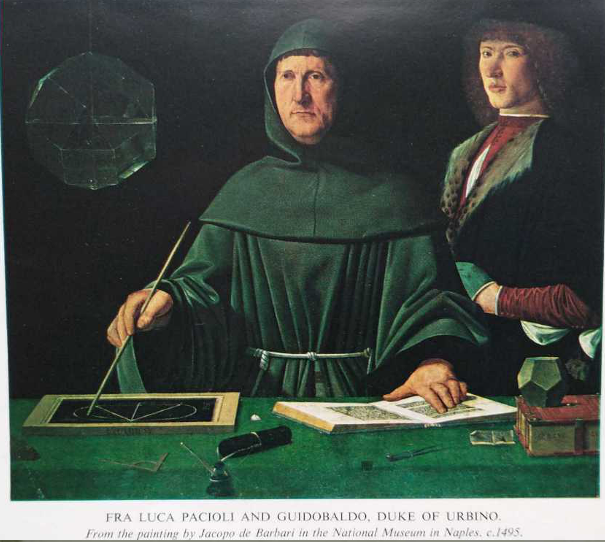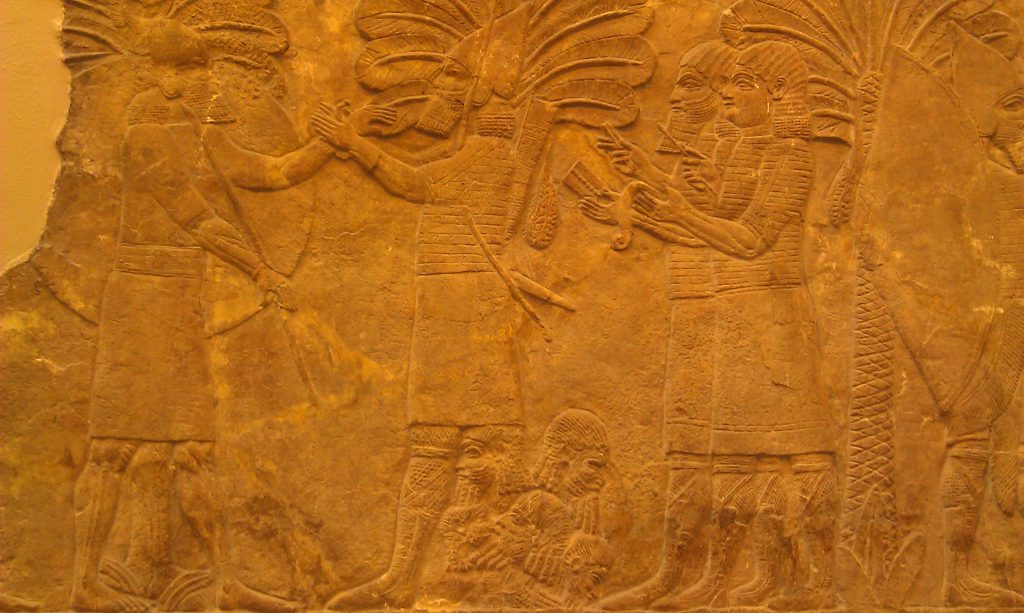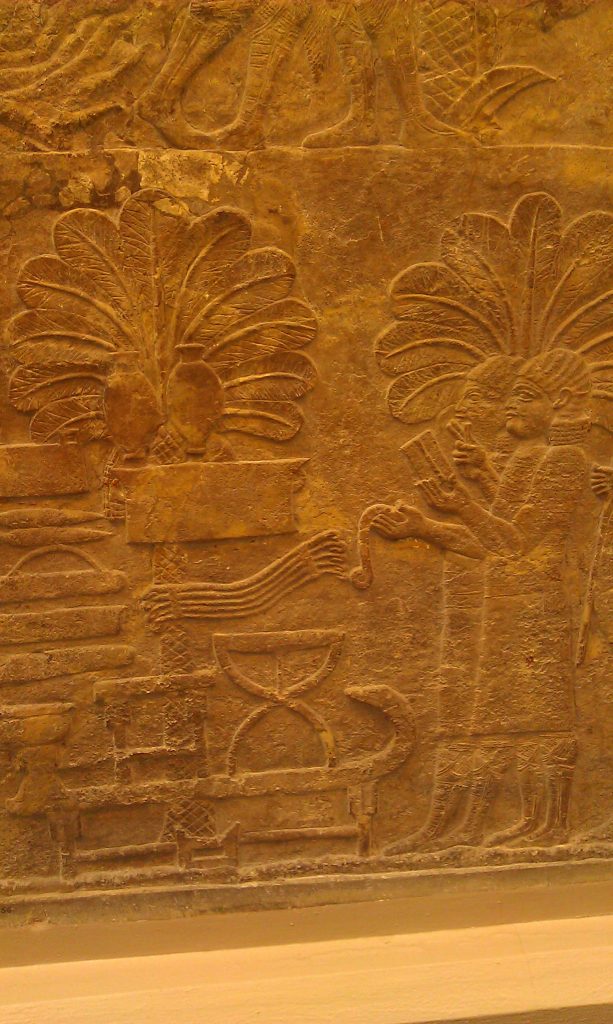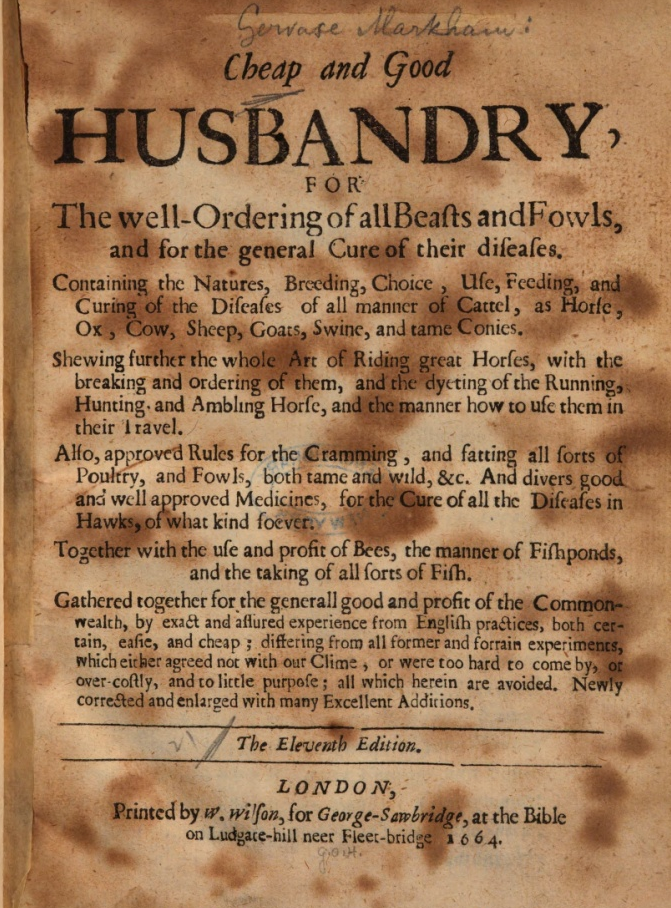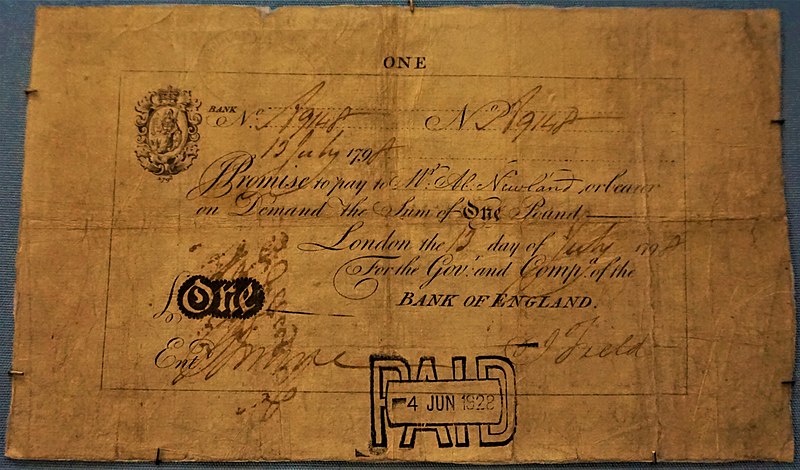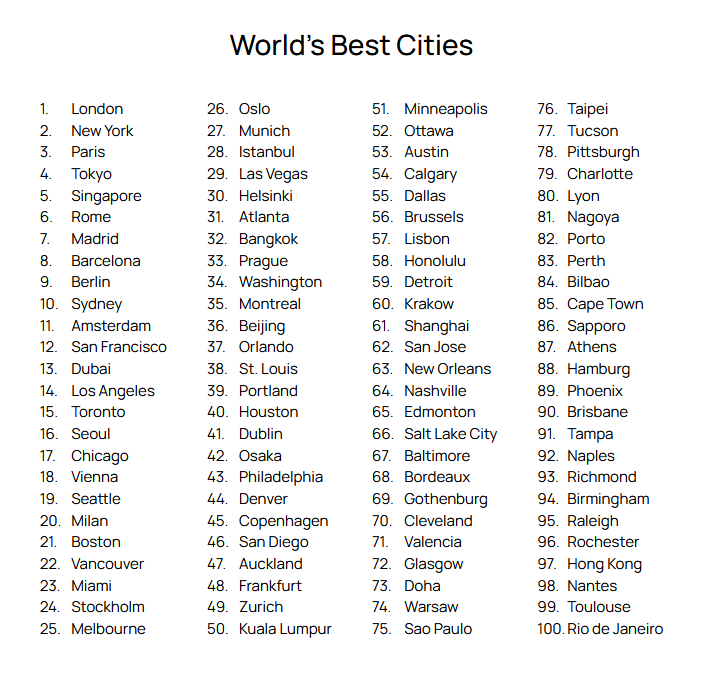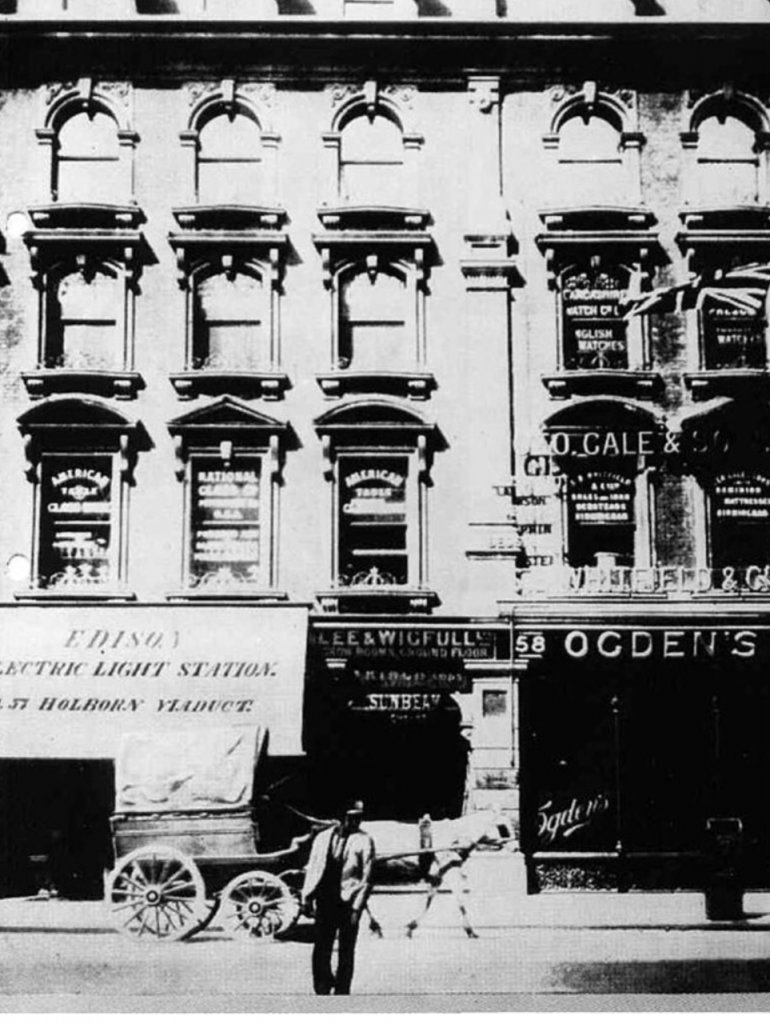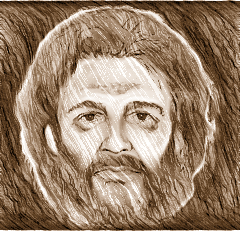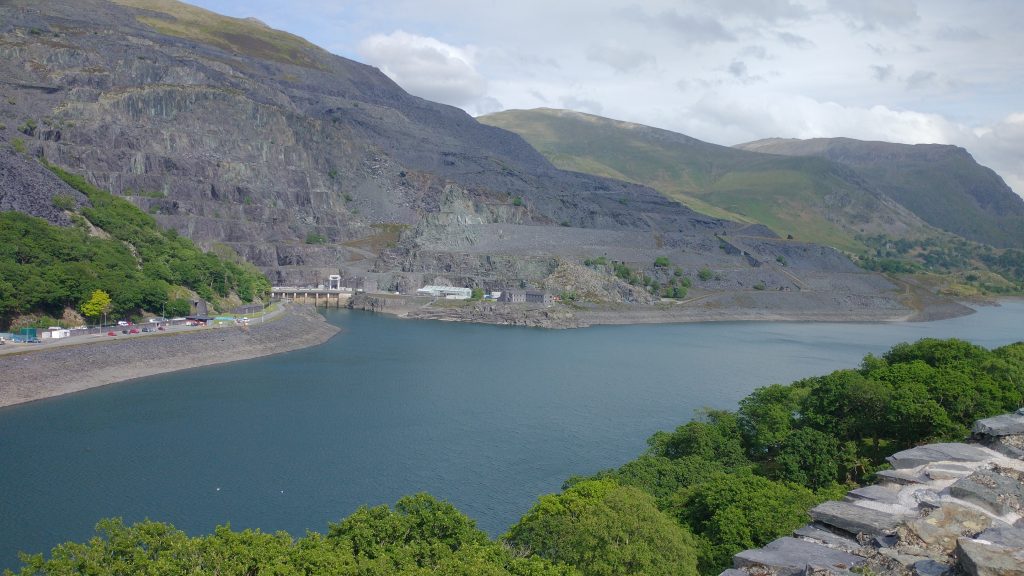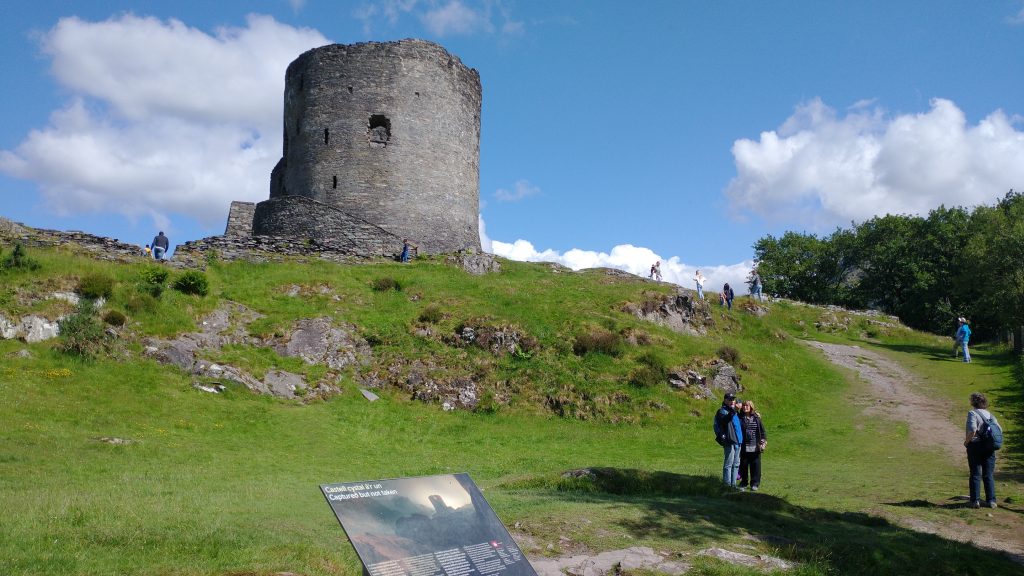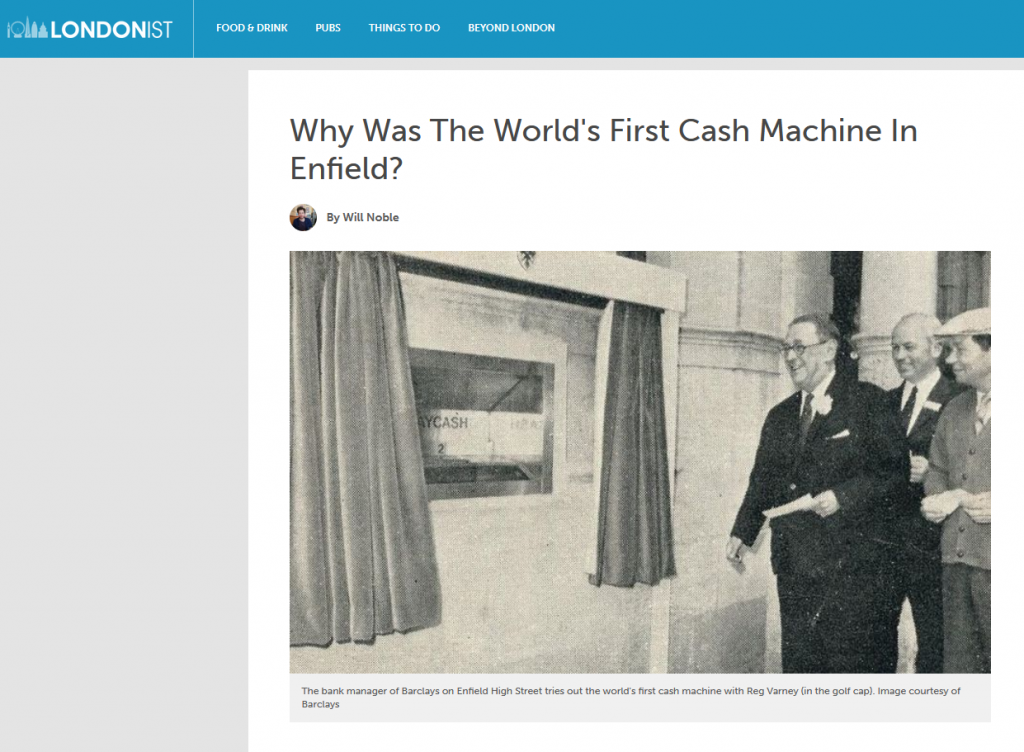
On the 10th April 2023, Heritage England announced on its webpage, that they had listed a Bank which contained the world’s first ATM Machine. On 27th June 1967 Barclays Bank open the first ATM at its Enfield Branch in London. Above, you will see local celebrity, Reg Varney (in hat), a star of a very popular and ‘corny’ sitcom called ‘On the Buses‘ opening the new machine. It miraculously delivered a £10 note without any human intervention, and offered access to money after banking hours.
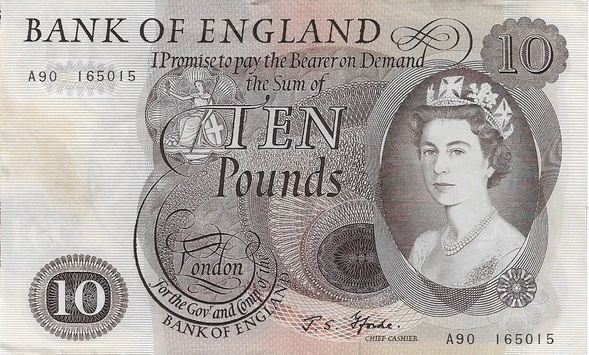
Barclay’s had previously launched the UK’s first credit card, and selected Enfield to be the place where they launched an automatic machine to dispense money. They are nicknamed ‘money machines’ in the UK. The customer was issued a ‘punched card’ and had to enter a PIN for the magic to be initiated. Barclays were developing the idea of a magnetic strip on a card at the same time.
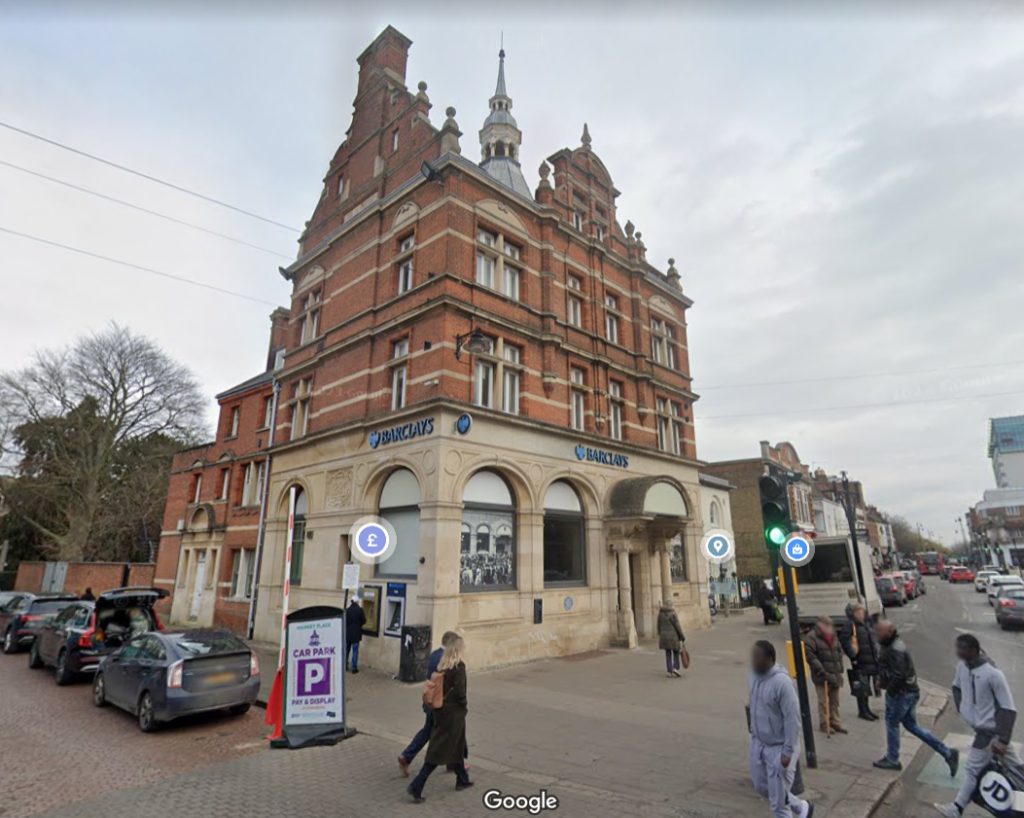
The building, which now has a plaque and a gold-painted modern ATM, is Grade II listed and so should be protected from development in future. The building itself is an interesting, almost typical, late Victorian red brick commercial building, with fine details in the Flemish Renaissance style by William Gilbee Scott. Scott lived in Enfield.
I look forward to visiting it on my next visit to Enfield Lock on my narrow boat Mrs Towser.
For more on Digital Heritage see my post and for more on Mrs Towser see my post here
First published in June 2023 and republished in 2024, 2025

